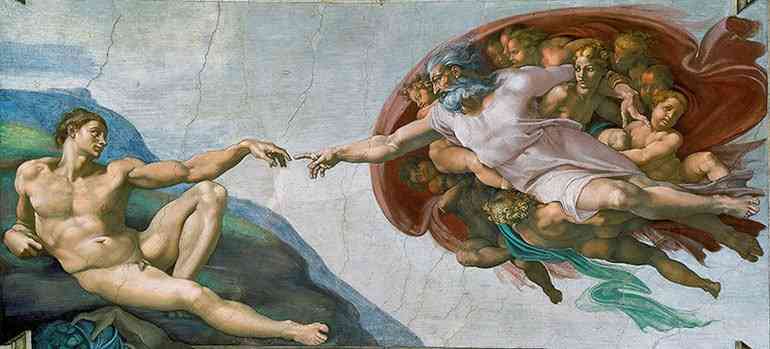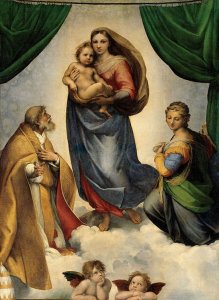
12 Aug Artistic Mastery from the Masters
Part One: Purpose & Meaning of Art
–
The Oxford Dictionary describes art as,
The expression or application of human creative skill and imagination, typically in a visual form such as painting or sculpture, producing works to be appreciated primarily for their beauty or emotional power.
Note the reference to imagination, which some may argue is an uncontrollable ability, to find a true artistic vision or idea required to create an artwork or masterpiece.
In many cases, we may experience imagination or inspiration in an instant.
Is it fair to say that this uncontrolled force my be accountable for many renowned art works as we know it?
We cannot, however, discredit the fact that creating excellent artwork takes significant mastery of the art and vision.
What we are saying is that a masterpiece may not always be created by our efforts alone-other factors such as imagination or inspiration also play a critical role.
–
Part Two: History of Art
Human history is a true testament to our culture, civilization and lives.
What is the history of art?
Here is a classic piece of history, as we see King Arthur of Camelot to be crowned.

There are many examples to choose from, including, the Wonders of the World, the Renaissance, the great Tang Dynasty and many more.
There is a great amount of detail and precision put into art forms such a the statue of Michelangelo or haunting sounds of the Chinese violin, otherwise known as erhu.
Below is a well-known piece, A Vow, from the world-famous, Shen Yun Performing Arts, performed by Xianchun Qi.
–
Where is art headed today?
Mainstream music, dance, paintings, sculptures and other forms have changed so much from the examples above.
Can we learn a lesson from history?
Can we try using some classical methods more often for our society’s future children and youth?
With so many variations of art in modern times, the divide between advocates of classical art forms and those who follow pop culture seems pretty huge in my opinion.
Perhaps I’m a dreamer, but I believe there could be a happy medium.
Here is a recent work, Compassionately Sprinkling the Manna, bringing us something new yet imbuing the great traditions of art.

–
Part Three: Present Art & Effects
Western civilization mastered the outer artform more than the inner meaning, which is admirable as the viewer can quickly discern the simple outer meaning of the artwork.
Western painting reached its peak during the Renaissance, while artists mastered their technique in drawing, perspective, architecture, tapestry, stained glass, sculpture, and the printing press, as outlined by Wikipedia.

One may also discover the inner meaning of artworks, which Chinese civilization was renowned to accomplish.
Classical Chinese paintings, as I understand them from my friends who paint, focuses on methods such as the artist’s posture, breathing and thoughts, so that each brush stroke places positive elements into the artist’s masterpiece.
Wikipedia states that, in the Tang Dynasty, it was not the artists’ focus to replicate a landscape painting, but instead to depict it’s emotions or rhythm of nature.
–
What are people thinking or feeling when they experience art?
Does it move you?
Does it inspire you?
Does it hurt you?
Does it give you hope?
Does it give you purpose?
–
Take music for example. Most of us would agree that we respond to music with varying moods at varying moments.
Goffin of Frontiers in Psychology, argues that music evokes moods which is distinctive from our aesthetic appreciation.
In other words, we feel or react passively to music with moods, but we may also look at the art form actively from an objective standpoint.
Analyzing art by studying how it affects us might be worth a little more of our time.
Although experiencing art such as music, which is a formless form, does it not enter our minds or bodies?
Let’s consider not only the affect art has on our moods but minds and bodies as well.
Just as we decide what foods to eat, clothes to buy and people to listen to, let’s consider what kinds of art we choose to experience.
Art could change us in a very powerful way for better or for worse.
In spirit of positivity, inspiration and some excellent classical guitar music, here is Paul Davids…
–
Sources
- Art. © 2018 Oxford University Press [Online] Available: https://www.collinsdictionary.com/dictionary/english/self-mastery [Accessed August 12 2018]
- King Arthur by Charles Ernest Butler. The Imperial Traditionalist (Feb 10 2106) [Online] Available: https://imperialtraditionalist.wordpress.com/tag/traditional-western-art/ [Accessed August 12 2018]
- Chinese Erhu 01 – A Vow (Jul 3, 2010) YouTube [Online] Available: https://www.youtube.com/watch?v=6DyTaijW1Jk [Accessed August 12 2018]
- Chinese painting. Sui and Tang dynasties (581–907). 2018 Wikipedia ® [Online] Available: https://en.wikipedia.org/wiki/Chinese_painting [Accessed August 12 2018]
- Western painting. 2018 Wikipedia ® [Online] Available: https://en.wikipedia.org/wiki/Western_painting [Accessed August 12 2018]
- 10 Most Famous Paintings of the Renaissance. Sistine Madonna by Raphael, 1512, The Creation of Adam by Michelangelo Buonarroti, 1512. Leonardo Newtonic [Online] Available: https://learnodo-newtonic.com/famous-renaissance-paintings [Accessed August 12 2018]
- Kris Goffin, Department of Philosophy and Moral Sciences, Ghent University, Ghent, Belgium (April 2014), Music feels like moods feel. Frontiers in Psychology [Online] Available: https://www.frontiersin.org/articles/10.3389/fpsyg.2014.00327/full [Accessed August 12 2018]
- TOP 10 songs for CLASSICAL guitar you should know! (May 4 2017) YouTube [Online] Available: https://www.youtube.com/watch?v=beLvpZziqCo [Accessed August 12 2018]


